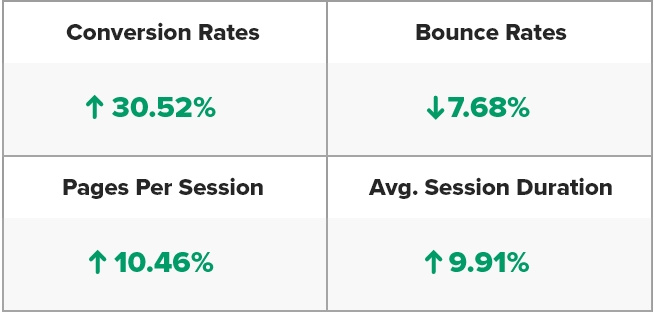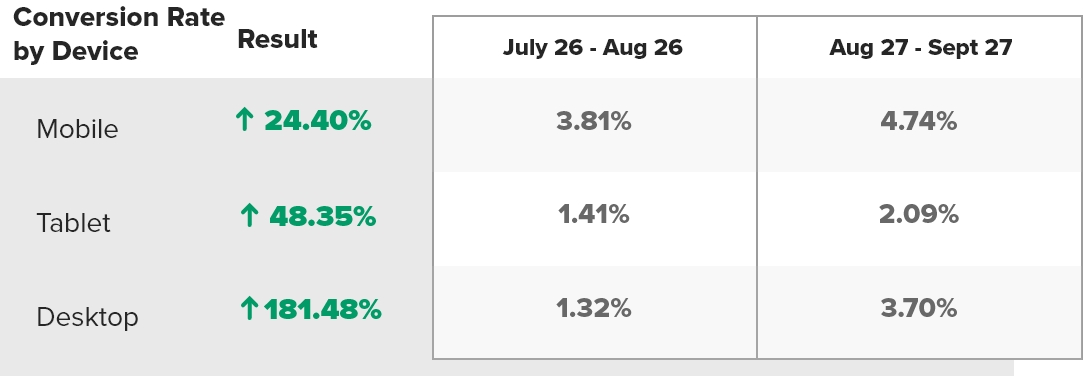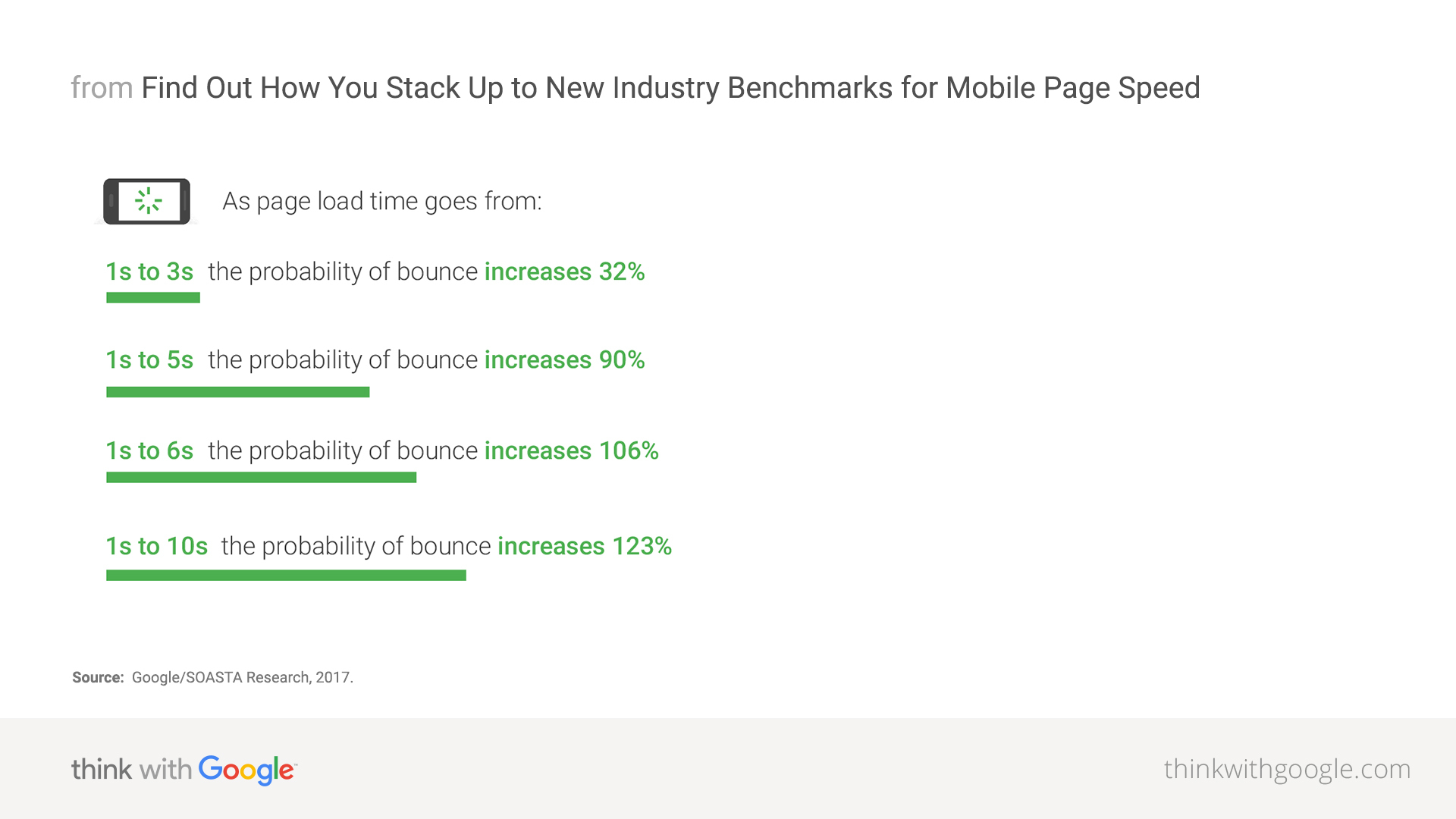Improving Site Speed: Direct Route to a Better Website User Experience: A Case Study
Every website user is unique. However, they have more in common than they do in differences. They all seek a friction-free user experience. Users want websites that tell them what they want when they want it. You may feel users only have high expectations for big brands. You may think they are willing to wait for you. However, this isn’t true. Your site speed is essential to a user’s needs. See how website page speed improvements helped a business like yours get better results from its website by providing a better user experience.
What Is Page Speed?
Page speed, or load time, refers to how quickly the website loads for users. It depends on a range of factors, and it can vary from user to user. Additionally, it differs from mobile to desktop devices.
However, page speed is more than a metric. It is a critical factor in a user’s impression of your website. It’s instrumental in creating the best website user experience. In this case study, you’ll see that page speed influences not only if they choose your services, but even if they simply stay on your website. Prior research found 53% of users abandon websites that take longer than 3 seconds to load.
Working Toward the Best Website User Experience
Achieving a high ranking on Google is no small feat. It’s a cornerstone goal for successful digital marketing, but the work doesn’t stop there. Simply appearing higher in search results isn’t what drives your business. It’s getting and keeping website visitors that puts dollars in your pocket.
While ranking high does increase your visibility and likelihood of users clicking on your website, it doesn’t guarantee a conversion or lead. We conducted an experiment to investigate the relationship between page speed and conversions or leads.
The Case Study
Our client Georgia Landscape Supply has a successful page about bulk gravel products. This is one of their most frequently viewed pages. In fact, the page already ranked #1 or #2 for a variety of keywords on both national and local levels. However, we still wanted to improve their conversion rates. We focused on how to improve load time for their website.
The Question
We wanted to know if and how page speed impacted the success of this landing page. The bulk gravel landing page is already successful in terms of ranking, but how could we increase that success? What will happen if we improve page speed? Will this increase the client’s conversions and profits?
The Hypothesis
Our hypothesis was simple:
If we improve page speed, then the conversion rate will increase.
Based on knowledge of user expectations and actions, users are not willing to wait. Users are impatient with short attention spans. If you do not give them what they are looking for when they want it, they will leave. However, if you improve load time, they will stay. They will explore the website, visit more pages, and will more likely convert.
Our Approach
We compared time range data, before and after work was completed to improve the page’s load time. Our focus was on two metrics;
- PageSpeed score
- Conversion rate
To begin our experiment, we identified the page’s PageSpeed score. Google’s PageSpeed Insights is a free tool that analyzes your web page’s site speed. It scores your website and highlights areas of improvement. For the most accurate results, it’s important to complete the tests in incognito browser windows. This allows you to mimic a first time user’s experience with your website.
The bulk bag landing page began with a PageSpeed score of 36 for mobile devices and 63 for desktop devices. Also, its load time was well above our target benchmark of 3 seconds.
The results of the PageSpeed test provided our starting point. Google marked several areas as high priorities to improve page speed, including:
- Optimizing and resizing images
- Upgrading how Google Fonts load in
- Removing excess JavaScript files
While some website improvements may seem simple, the recommended improvements for site speed require web development expertise. These changes require an in-depth understanding of how your specific website functions. What JavaScript or CSS files can you remove? Can files can be condensed?
Our Results
Once one of our web developers made the suggested changes, we ran PageSpeed Insights tests again. The score for desktop devices jumped into the 70s. Additionally, the average page load speed dropped from 4.64 seconds to only 3.24 seconds. While 1.4 seconds may not sound impressive, that’s a 30% decrease in load time.
Prior to these changes, this page’s load time was slower than 82% of the website’s pages. However, with the changes, it’s now faster than 15.67% of the website’s pages. Even more so, these changes were a result of only making some of the changes. It wasn’t possible to make every recommended change due to the limitations of the site.

After a month with the updates, we checked the metrics of the bulk gravel landing page. We found:

The most important improvement is the increase in conversions. This didn’t affect the page’s ranking, nor did the page see an increase in traffic. The same amount of people saw the page before and after the change in our 30 day window. However, by shaving just over a single second off the load time, we increased conversions. Conversions increased on all devices, but desktop conversions increased 48.35%. Furthermore, this had a positive impact on other metrics that directly influence rankings.

We found a direct connection between site speed and conversions. When you improve load time, you provide the best website user experience. You meet the expectations of users who want your website to load quickly. Your site is easier to use, and they have a reason to stay on your site. They have a reason to trust and choose you.
Why You Need to Care About How to Improve Page Speed
The purpose of your website is to find, retain, and convert users. The load speed of pages plays a critical role in each of those aspects.
Finding More Users
Regarding ranking, Google has had their eye on speed as a ranking factor for more than a decade. In 2010, it became a signal for ranking on desktop devices. In 2018, page speed became an official ranking factor for mobile devices. Further, Google has indicated it will shift from a ranking signal to a ranking factor in the imminent future.
However, you shouldn’t wait until it’s official to improve load time. Page speed is an indirect ranking factor that impacts direct ranking factors like:
- Bounce rates
- Conversion rates
- Pages per session
By improving your website speed now, you can impact critical ranking factors. You can be proactive in helping more people to see your website. More people seeing your website can mean more money for you.
Keeping Users on Your Website
Your website’s visitors want the best website user experience. They want a website that answers their questions and is easy to navigate. However, more than anything, they want a website that loads quickly.
Slow page speeds impact users more than you think. In fact, consumer research found delays in load time on mobile devices cause a strong stress response. The stress response is comparable to watching a horror movie or solving a complex math problem. Prevent stress with a focus on excellent site speed to achieve the best website user experience.
As our study showed, when your website quickly loads, you satisfy the needs of your visitors. You make it easy for them to explore more to find the answers they need. In return, you can lower your bounce rate and boost your pages per session.
Converting Users to Leads
The old saying goes that time is money. While it may seem like a cliché, this rings true for load time. A study from Google found every second your website takes to load increases the probability the user will leave. The probability of a mobile user leaving the website increases 123% from a one second load time to a 10 second load time.

Every second your website takes longer to load, you lose users. If your website does nothing but lose users because it’s slow, how will you convert anyone?
Concerned About Your Website’s Performance?
Performance is paramount in providing your website visitors with the best website user experience. The process to improve load time may seem overwhelming, but we can help. Talk to our digital marketing professionals. We have the expertise to diagnose your website’s pain points and execute critical website improvements. Reduce your site speed and increase valuable conversions.
